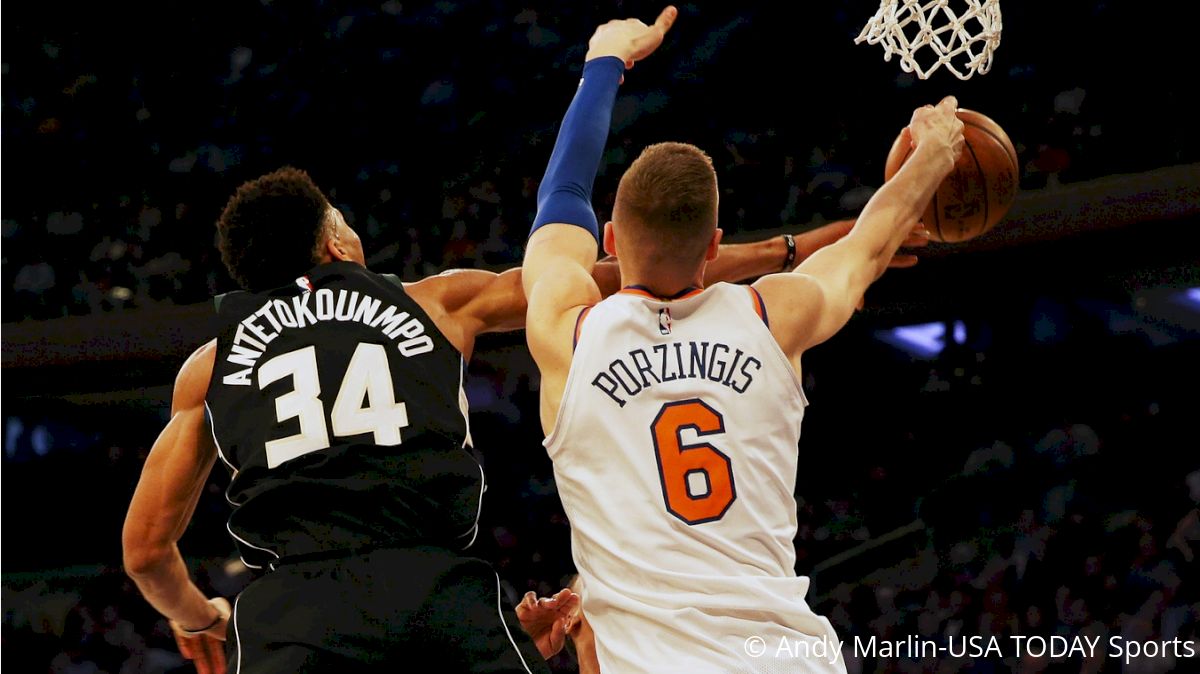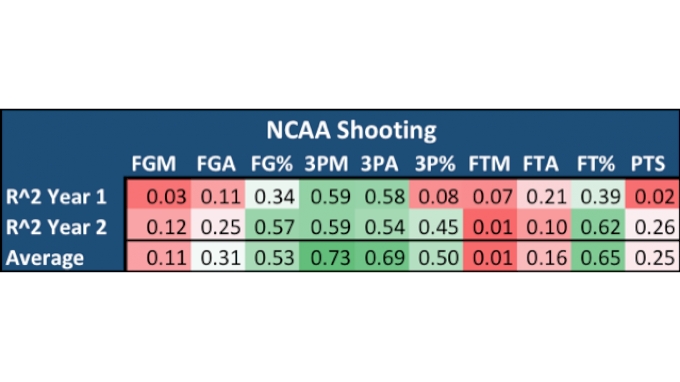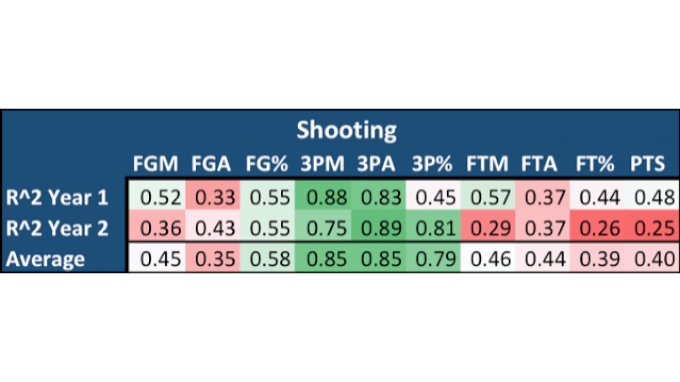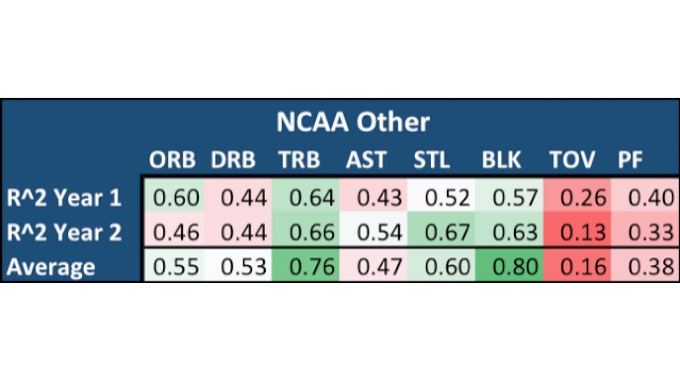How NCAA & EuroLeague Statistics Translate To The NBA, & What We Can Learn
How NCAA & EuroLeague Statistics Translate To The NBA, & What We Can Learn
Scouts and fans alike have many ideas about which skills translate and which don't from the NCAA and EuroLeague to the NBA, but what do the numbers say?

A few weeks ago, we took a look at how well EuroLeague stats translated to the NBA, finding there to be a surprisingly strong relationship between success in the EuroLeague and success in the NBA across a player’s first two seasons. This was particularly the case with stats like three-point shooting, field goal percentage, rebounding, and block rates. Today, we will take a look at those prospects’ NCAA counterparts to compare how well stats in college translate to success in the NBA.
I took all the significant NCAA players going back to the 2016 NBA Draft who played at least a full season in college and the NBA. Like last time, I found the R^2 values of regressing NBA stats onto NCAA stats. R^2 values can be thought of as a percentage. For example, if the R^2 correlation value between three-point percentage in college and the NBA is 0.5, then we could say that approximately 50 percent of a player’s scoring output in the NBA can be explained by their scoring in college.
Below, I have posted the R^2 values of the different correlations for both NCAA and the EuroLeague, broken down into two main statistical categories. All stats are per 36 minutes. I also looked at their first and second year separately in order to gauge how additional years of NBA experience might affect those correlations.


The first thing to point out when comparing the two is that — across the board — when it comes to shooting, the EuroLeague stats look to be better predictors of NBA stats than NCAA stats. This could be because the sample size of European players that come over and manage to play is much smaller, meaning only those who are really putting up big numbers end up getting drafted. Alternatively, it could mean that young players’ role within EuroLeague offenses more closely resembles young players’ roles in the NBA. The NCAA numbers could also be skewed by four-year NCAA players who put up big numbers in college as the focal points of their offenses, who are then relegated to bench roles in the NBA.
Besides just the overall difference in average strength of predictability, it also looks like there are differences in the relative strengths of different stats. The skill that seems to most consistently translate to the NBA, whether from the NCAA or EuroLeague, is shooting, particularly three-point shooting. While by their second year, three-point shooting percentage for players coming from the NCAA seems to fall more in line with their college days, it appears as though they really struggle in their first year, perhaps due to adjusting to NBA defenses and the NBA three-point line.
For NCAA players, all other college scoring statistics seem to hold very little power in predicting NBA success. Players don’t get up as many shots, don’t get to the line nearly as frequently, and, as a result, they score much less. The biggest disparity between college players and EuroLeague players in terms of scoring seems to be demonstrated through free throw shooting. While the R^2 value of free throw shooting percentage is much higher for NCAA players, the R^2 for free throws attempted and made is much lower for players coming out of college. And they stay low through a player’s second year.
The first stat chart is for the NCAA is labeled, and the second chart is for EuroLeague.


For non-shooting stats, the NCAA and EuroLeague correlations look relatively similar. Both blocks and rebounding seem to translate pretty well to the NBA, regardless of whether one is coming from college or the EuroLeague. The defensive numbers do lend credence to the hypothesis that NCAA players come to the NBA more ready to adjust to NBA defenses, as nearly 60 percent of NBA steals per game and 80 percent of blocks per game can be explained by college stats.
However, while their defensive stats seem to translate relatively well, first- and second-year players coming out of college appear to have the same issues adjusting to NBA defenses, as, just like European players, their turnover rates are high (and remain high through their second year). In contrast to the shooting and scoring stats, it looks as though, on average, EuroLeague correlations are lower for these categories, perhaps demonstrating the differences between the European and college games.
While this analysis is far from exhaustive, it is interesting to see how well some skills — three-point shooting, rebounding, and blocks — translate to the NBA, regardless of where a player is coming from. Conversely, there are stats — such as turnovers and personal fouls — that require some adjustment to the NBA game, regardless of whether a player comes from the EuroLeague or the NCAA.
The differences in correlations between the leagues in terms of scoring, getting to the line, steals, and rebounding could point to differences in each league’s style of play, or the differences could point to the type of prospects being drafted from each league. European standouts from the past few drafts have tended to be big men — Kristaps Porzingis, Clint Capela — and the correlation of stats seem to back this up. It will be interesting to see how our perception of what European skills translate changes this year, as young European guards such as Luka Doncic and Frank Ntilikina are given opportunities to contribute right away.
Fri Lavey is a writer and consultant who studied economics and statistics at Harvard University. He has previously worked as a data analyst for the NBA, the MLB, and the Philadelphia 76ers.